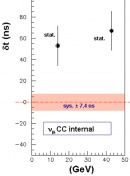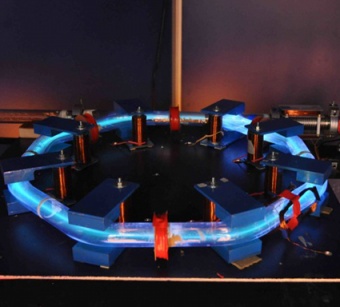Image of the week
Electrons dance in ParisLast month, a true tabletop electron accelerator was shown to the public for the first time during the CNRS exhibition Entrée en matière in Trocadéro’s gardens in Paris, France. This model was built to serve as a general introduction to the understanding of the principles underlying accelerator operations in general and more specifically colliders. The public can actually see and manipulate the controls and therefore easily grasp what is happening. The model is a small replica of the Orsay storage ring (Anneau de Collision d’Orsay, ACO) at LAL. ACO was in service as a collider from 1965 to 1980 with an energy of 500 MeV for each beam. The real accelerator is now a museum, listed on the French heritage register. Learn more (in French) about the model called “Electrons’ dance”. |
In the News
-
from WIRED (Japanese edition)9 November 2011震災復興の「加速器」となるか? 宇宙誕生の謎を解くILC計画
-
from Interactions9 November 2011Physicists of the Double Chooz experiment detected a short-range disappearance of electron antineutrinos. They presented this result on Wednesday 9 November 2011 at the LowNu conference in Seoul, Korea.
-
from Physics World3 November 2011A full-scale undulator module that could produce the intense positron beams needed for next-generation particle colliders has been unveiled by an international team of physicists.




